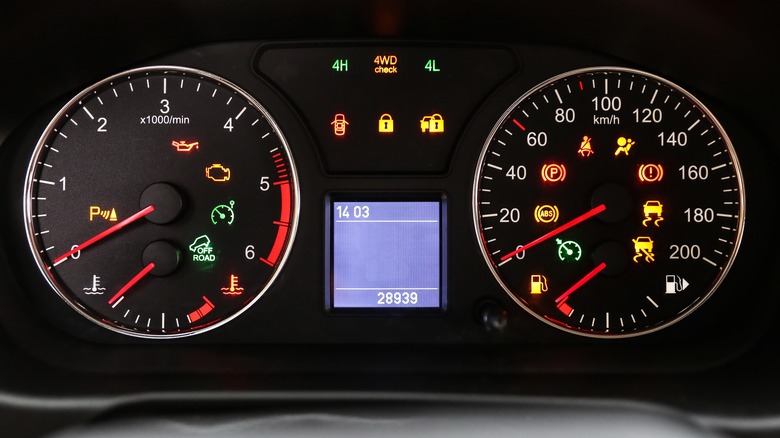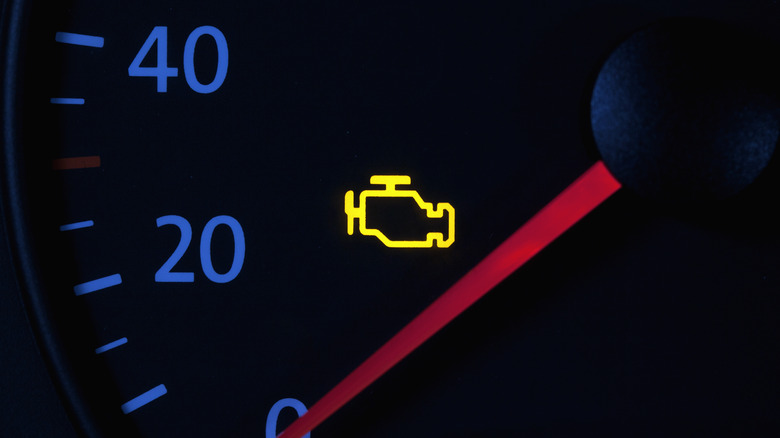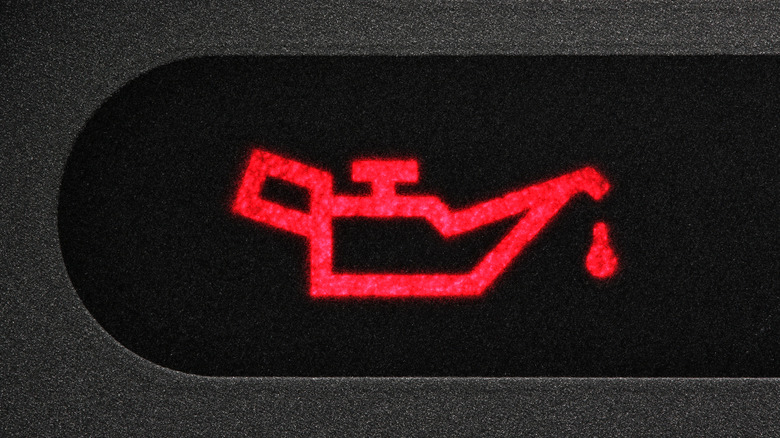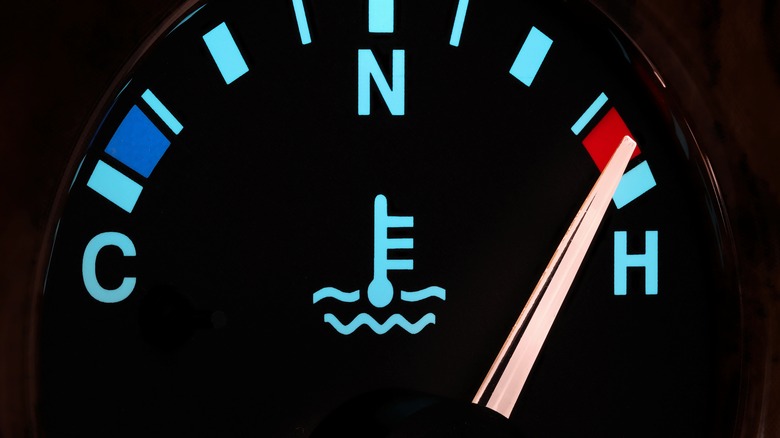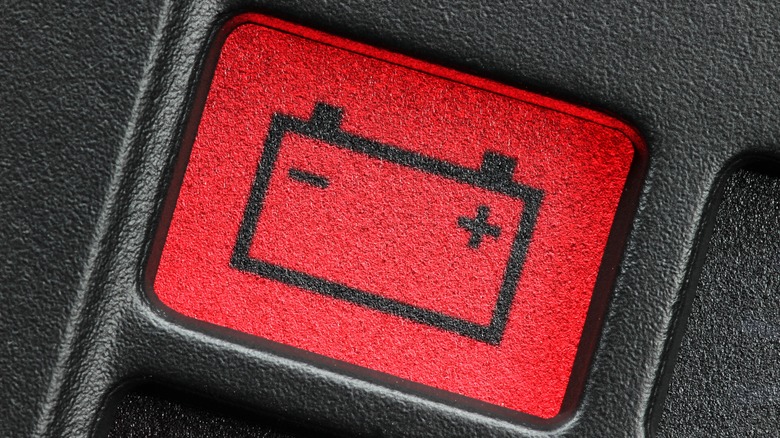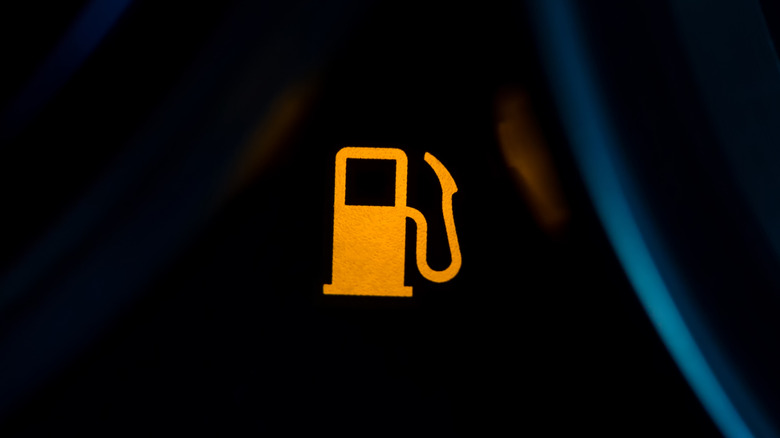5 Of The Most Important Symbols To Know On Your Car's Dashboard
The dashboard provides drivers with an assortment of valuable information while on the go, including the array of symbols that light up for various reasons, which often become victims of being overlooked, ignored, or forgotten over time. But people should be aware that when these perplexing pint-sized pictures begin to glow, they are really acting as miniature warning signals. So, whether an individual considers themselves a novice behind the wheel or a road warrior with years of experience, understanding the meaning behind each of the little illuminated images could mean the difference between a quick fix and being stranded on the side of the road.
The thing to remember is that when it comes to the dashboard, the vehicle speaks in hieroglyphics with cryptic little icons serving as a means for the car to inform the driver about certain issues or changes. While these vital messengers may be a bit difficult to decipher for some, the benefits of being fluent in the secret language of automobiles could very well ultimately lead to less stress, headaches, and repair bills down the road.
Demystifying the meaning of these alerts is a crucial part of maintaining the health and safety of a consumer's main source of transportation. For those out there who could use a quick refresher or a crash course in cracking the secret car code, here is a quick run-through that should get everyone up to speed on what they should know when some of the most crucial dashboard symbols start to shine.
Check Engine Warning Light
While every symbol that lights up on the dashboard serves a pivotal purpose, the check engine warning light represents the concerns and well-being of the driving force behind the automobile. The engine-shaped icon is notoriously never a good sign, mostly because it's designed to alert the driver to potential issues with the vehicle's engine or emission control system. The warning could refer to something simple, such as a loose gas cap, or a more serious ordeal, like possible problems with the catalytic converter. If it periodically turns off and on or shows up colored in yellow or amber, there could be an irregularity that isn't as serious. But if the light remains glowing or even flashes red, looking into the matter right away should be a top priority.
It's no secret the notion of ignoring the check engine light has become a bit of a running joke and has been passed off for laughs in movies and TV shows. It's also presumably safe to assume many people have heard others boast about not caring about the check engine light with no mention of any negative experiences. But smart vehicle owners should ignore that nonsense and take engine care seriously.
Dismissing the light can lead to potentially expensive repairs and reduced fuel efficiency. Because modern vehicles are equipped with complex diagnostic systems, making sure to get a professional assessment is a wise move to identify and address the underlying crisis efficiently. In many cases, the trouble can be resolved relatively easily if detected early, ensuring the consumer's vehicle continues to run smoothly and safely.
Oil Pressure Warning Light
After a while behind the wheel, drivers may come across an oil can or oil drop symbol, which is the car's subtle way of indicating that there are some potential issues regarding the engine's oil pressure. While gasoline enables the vehicle to run, proper oil pressure is just as crucial, acting as a lubricant for the engine's moving parts, preventing excessive friction, heat buildup, and costly engine damage. When the warning sign is activated, it reveals to the consumer that oil pressure has fallen below the recommended level, which could indicate it is time for a refill, oil change, or repairs for problems like an oil leak or malfunctioning pump.
When it comes to what to do next, the best thing to do is assess the situation once the driver can pull over safely and turn off the engine. The initial step should be to pop the hood and check the dipstick. Information regarding what type of oil to use and how much can be found in the owner's manual. After adding the necessary amount of oil, kick the engine back into gear to see if the light remains.
If the warning is still there, the best course of action would be to schedule an appointment with a mechanic or technician to see what's causing the alert. Even though the vehicle won't immediately self-destruct, an illuminated oil pressure warning light should be taken care of sooner rather than later to ensure the reliability and longevity of the consumer's primary means of transportation.
Temperature Warning Light
If you see an old-fashioned-looking thermometer icon making its presence known on the dashboard, the car is letting the driver in on the fact that the temperature has ventured beyond the normal limits. The engine temperature warning light is certainly a cause for concern when it illuminates, especially considering what could happen if the problem persists.
The vital warning indicator monitors the temperature of the engine's coolant, and when things start to overheat, it is meant to give the vehicle's owner plenty of time to assess the situation. The causes for a visit from the red alert could stem from a coolant leak, excessive use on a hot day, hose cracks, or a water pump malfunction. Before taking a look, the safest practice would be to turn off the engine and let the car cool down a bit to prevent getting burned.
After checking for any potential issues and adding any necessary additional antifreeze, if the signal remains ignited or continues to appear, it is important to have the vehicle checked out by a mechanic or service station. An overheated engine can not only cause severe damage but is also a fire hazard, meaning people should never sleep on the engine temperature warning light.
On the other hand, when the indicator light is blue, it signifies that the engine hasn't warmed up sufficiently to perform at its best on the road, probably weather-related, like thanks to a cold winter morning. Therefore, it's probably wise to wait until things warm up to ensure the blue thermometer goes out before taking one's ride for a spin.
Battery Warning Light
The icon that resembles a children's building block with a positive and negative symbol at each end provides drivers with the knowledge that the car has anything but an electrifying experience when illuminated. The battery warning light displayed while a person is driving indicates there's an issue with the vehicle's charging system and that the battery is not being properly powered.
One reason that could lead to the arrival of the unfortunate warning is thanks to a defective battery due to corrosion, damaged cells, faulty connectors, or loose wires. It could be one of the many signs that the battery needs to be replaced or point to other issues with the serpentine belt or alternator. Whatever the case, it's probably a good idea to not hesitate to have a professional look into the matter and determine the best steps to take to ensure the battery doesn't drain entirely on the driver while on the road, leaving the car unable to operate.
There are several ways to tell if a battery is dead, including if people see the icon appear when the car isn't in motion. Leaving a light on in the vehicle or problems under the hood could be the cause, but hooking up jumper cables to another car battery or a jump starter charging device can spark some life into the charging system to get the power supply back on track. After a while, the car will be able to drive, and once at the destination, drivers can see what needs to be done to prevent the warning sign from showing up again.
Low Fuel Light
Another important symbol to keep an eye out for on the dashboard is the low fuel light, which is displayed by a lit-up picture of a tiny gas pump. The warning icon illuminates to let the driver know the fuel situation isn't ideal and to start taking action to prevent things from potentially escalating.
When the amount in the tank reaches a point close to going empty, usually ranging from being left with anywhere from 10–15% capacity, the little light is meant to act as a sign that it's time to pull into the next gas station before the vehicle has nothing left to run on. Being stuck in the middle of nowhere or stalling out in rush hour on the highway are scenarios that the alert has been specifically designed to ensure don't occur, which is why fueling up with the right octane gas as soon as the signal illuminates is the smart play.
While It's normal for people to have the urge to push their vehicle to its limits and continue to drive with the gas light glowing on the dashboard, the highly risky practice is not recommended. Living dangerously by squeezing every last drop of fuel out of the tank can potentially result in damage or issues and eventually require repairs to the engine. Ignoring the low fuel light puts an unnecessary amount of stress on some of the vehicle's most pivotal components, so drivers should always make a pit stop when they see the signal to fuel up.
